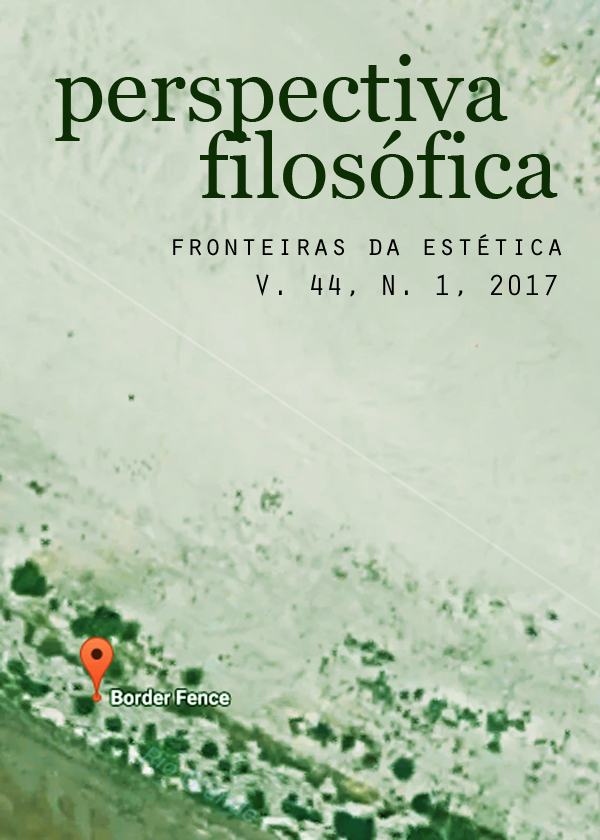Sublime borders: modernism, music and the negative
DOI:
https://doi.org/10.51359/2357-9986.2017.230357Palabras clave:
adorno, negative aesthetics, musicResumen
“After the fall of formal beauty, the sublime was the only aesthetic idea left to modernism” (Adorno 1997: 197). Positioning at its core the category of the sublime, the modernist aesthetic famously engenders a problematic relationship between music – characterised as an autonomous, self‑relating agent of nonrepresentational negativity pursuing on its own terms a powerful critique of the Western metaphysic of presence – and its embeddedness in cultural contexts. At its most radical, like in Lyotard’s aesthetic, music’s ‘immaterial matter’ becomes a traumatic, ‘in‑human’ Otherness, a sublime, otherworldly sound-event, “which is not addressed […and] does not address” (Lyotard 1991a: 142). The musicologist Susan McClary recently highlighted how in the last few decades a new generation of composers has arisen, which by still drawing on the modernist tradition nonetheless engages more directly with signification and the cultural inscription of music. On this basis McClary calls for rehabilitating the allegedly feminine category of the beautiful, thus relocating music’s essence within the anthropological boundaries of pleasure and opening it for cultural diversity and contextuality. Yet, is the beautiful the more apt category for aesthetically framing this artistic development? As Catherine Belsey has pointed out, the specific twist at the core of Žižek’s philosophy consists in its conflating Lacan’s psychoanalytical theory of sublimation with Kant’s concept of the sublime (Belsey 2005: 141). Žižek’s sublime object thus intermingles not only pleasure and pain but also the absolute negativity of the Lacanian Real and the positive features of its cultural inscription. In my paper I explore the potential this theoretical frame offers for reading these recent artistic developments neither in terms of a domesticated modernism nor as a return to the aesthetic category of beauty as a culturally embedded fit between form and content. Instead, I will propose that we read them as the exploration of a specific, twisted space at the crossroad of the ‘meaningful’ positivity of culture and that ‘sublime’ negativity that the modernist aesthetic sees as the nonrepresentational essence of music.
Citas
Adorno, T.W. (1997). Aesthetic Theory, Minneapolis/MN: University of Minnesota Press.
Badiou, A. (2006). The Century. Cambridge: Polity.
Beech, D. (2009). Introduction. Art and the Politics of Beauty. In D. Beech (ed.) Beauty. Documents of Contemporary Art. London‑Cambridge/MA: MIT Press, 12-19.
Belsey, C. (2005). Culture and the Real. Theorizing Cultural Criticism. London‑New York/NY: Routledge.
Comay, R. (2013). Hegel’s Last Words. Mourning and Melancholia at the End of the Phenomenology. In J. Nichols & A. Swiffen (ed.) The Ends of History: Questioning the Stakes of Historical Reason (pp. 141–160). New York: Routledge.
Downes, S. (2014). Beautiful and Sublime. In S. Downes (ed.) Aesthetics of Music. Musicological Perspectives. London‑New York/NY: Routledge, 84‑110.
Jameson, F. (2009). Valences of the dialectic. London: Verso.
Lacan, J. (1992). The Seminar. Book VII. The Ethics of Psychoanalysis, 1959-1960 (trans. Dennis Porter). London: Routledge.
Lacan, J. (2005). Le triomphe de la religion, précedé du Discours aux catholiques. Paris: Seuil.
Leipert, T. (2012). Destination Unknown: Jean-François Lyotard and Orienting Musical Affect. Contemporary Music Review, 31(5-6), 425–438.
Lyotard, J.-F. (1991a). After the Sublime, the State of Aesthetics (trans. by G. Bennington & R. Bowlby). The Inhuman. Reflections on Time (pp. 135–143). Cambridge: Polity Press.
Lyotard, J.-F. (1991b). Obedience (trans. by G. Bennington & R. Bowlby). The Inhuman. Reflections on Time (pp. 165–181). Cambridge: Polity Press.
Lyotard, J.-F. (2009). Music and Postmodernity (1996). New Formations, 66(2), 37–45.
McClary, S. (2015). The lure of the Sublime: revisiting the modernist project. In E. Guldbrandsen & J. Johnson (ed.) Transformations of Musical Modernism. Cambridge/MA: Cambridge University Press, 21-35.
Solomon, R.C. (1991). On Kitsch and Sentimentality, The Journal of Aesthetics and Art Cirticism, 49(1), 1-14.
Žižek, S. (1989). The Sublime Object of Ideology. London: Verso.
Žižek, S. (2004). Organs without bodies. Deleuze and Consequences. New York-London: Routledge.
Žižek, S. (2014). From Kant to Hegel. International Journal of Žižek Studies, 8(1), 1–19.
Descargas
Publicado
Número
Sección
Licencia
A Revista Perspectiva Filosófica orienta seus procedimentos de gestão de artigos conforme as diretrizes básicas formuladas pelo Conselho Nacional de Desenvolvimento Científico e Tecnológico (CNPq). http://www.cnpq.br/web/guest/diretrizesAutores que publicam nesta revista concordam com os seguintes termos:
Os autores mantém os direitos autorais e concedem à revista o direito de primeira publicação, sendo o trabalho simultaneamente licenciado sob https://creativecommons.org/licenses/by/4.0/deed.pt_BR que permite o compartilhamento do trabalho com reconhecimento da autoria e publicação inicial nesta revista.
Os autores têm autorização para assumir contratos adicionais separadamente, para distribuição não-exclusiva da versão do trabalho publicada nesta revista, com reconhecimento de autoria e publicação inicial nesta revista (Consultar http://opcit.eprints.org/oacitation-biblio.html).

Esta revista está licenciada com uma Licença Creative Commons Atribuição 4.0 Internacional.













